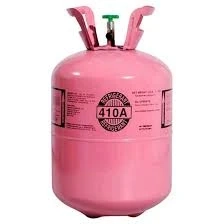R-410A, often just called 410A, is a popular refrigerant in HVAC systems, prized for its energy efficiency and eco-friendliness. It’s an HFC (hydrofluorocarbon) that has replaced older, more harmful refrigerants like R-22. But using 410A comes with its own set of best practices and safety precautions. This guide will walk you through the key dos and don\'ts of handling 410A refrigerant to ensure optimal performance and safety.
Understanding 410A Refrigerant
What is 410A?
R-410A is a blend of two HFCs: R-32 and R-125. It’s non-ozone-depleting and is widely used in both residential and commercial HVAC systems due to its high performance.
Benefits of 410A:
- Eco-Friendly: 410A has a lower global warming potential compared to older refrigerants.
- Energy Efficiency: It enhances energy efficiency, reducing utility bills.
- Superior Performance: Known for its excellent cooling capacity and high pressure, providing better temperature control.
Dos When Using 410A
1. Do Get Proper Training
Make sure that technicians handling 410A have the right training. The refrigerant operates at higher pressures than older refrigerants, which requires specific skills and knowledge.
2. Do Use the Right Tools
Always use equipment that’s designed for 410A. This includes high-pressure gauges, recovery machines, and charging scales to ensure safety and efficiency.
3. Do Regular Maintenance
Routine maintenance is key for HVAC systems using 410A. Regular checks for refrigerant levels and inspections of system components help prevent leaks and ensure optimal performance.
4. Do Follow Manufacturer Guidelines
Always adhere to the manufacturer’s instructions for installing, servicing, and maintaining systems that use 410A. This helps maintain system integrity and ensures warranty compliance.
Don\'ts When Using 410A
1. Don’t Mix Refrigerants
Never mix 410A with other refrigerants. Mixing can damage your HVAC system, cause inefficiencies, and even pose safety risks.
2. Don’t Use Outdated Equipment
Old equipment, like tools designed for R-22, isn’t rated for the higher pressures of 410A. Always use updated equipment to avoid failures and hazards.
3. Don’t Vent to the Atmosphere
It’s illegal and harmful to release 410A into the atmosphere. Always recover and recycle it properly using certified recovery equipment.
4. Don’t Forget Safety Gear
Handling 410A without proper safety gear can be dangerous. Always wear gloves, goggles, and protective clothing to prevent exposure to the high-pressure refrigerant.
Purchasing 410A Refrigerant
Shop at Purchaser.com: Your Reliable Source
Purchaser.com is a trusted provider of HVAC products, including 410A refrigerant. Their easy-to-use website features detailed product descriptions, customer reviews, and competitive pricing. With secure payment options and fast delivery, Purchaser.com ensures a hassle-free shopping experience for all your HVAC needs.
FAQs About 410A Refrigerant
Q: Is 410A refrigerant flammable?
A: No, 410A is non-flammable and safe for HVAC systems.
Q: Can I retrofit an R-22 system to use 410A?
A: No, R-22 systems cannot be retrofitted for 410A due to different pressure and oil requirements.
Q: What should I do if my system leaks 410A?
A: Shut down the system immediately and contact a certified technician to repair the leak and recharge the refrigerant.
Conclusion
Proper use of 410A refrigerant is essential for maintaining efficient and environmentally-friendly HVAC systems. By following the dos and don\'ts outlined in this guide, you can ensure that your system performs safely and optimally. For high-quality 410A refrigerant and other HVAC products, visit Purchaser.com – your go-to source for reliable solutions.


